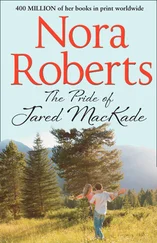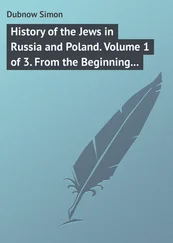Keen’s warning about studies late in colonial/post-colonial trajectories refers to a dilemma inherent in cultural anthropology, analogous to the Heisenberg Uncertainty Principle in physics. That principle states, in effect, that any physical measurement inevitably perturbs the system being studied and thereby introduces uncertainty into what the true value would have been if the system had not been perturbed. (Specifically in particle physics, the principle states that it’s impossible to measure simultaneously the exact values of both a particle’s position and its velocity.) To appreciate the corresponding dilemma in cultural anthropology, recall that modern anthropological studies of Aboriginal Australia began in the 20th century, and ethnographic accounts began in the 19th century before the rise of modern professional anthropology. However, Europeans had already landed in Australia in 1616 and founded their first settlement in 1788, while Macassans (Indonesian fishermen) had regularly been visiting northern Australia for many centuries before European arrival, and unidentified Austronesian people from Indonesia somehow introduced dogs (dingoes) and possibly other life forms and technologies into Australia several thousand years ago.
Modern studies of Aboriginal Australians have thus been of societies radically changed from their pre-European or pre-Macassan condition, because most of the population had already been killed by European-introduced and perhaps also Macassan-introduced diseases, conquered and subjected to the control of Euro-Australian state government, prevented from exercising traditional fire management (i.e., burning) of their landscape, driven off their prime lands targeted for European settlement, and deprived of part of their subsistence base by the impacts on native animals and plants of European-introduced cats, foxes, sheep, and cattle and Austronesian-introduced dingoes. Similarly, while the !Kung of the Kalahari Desert are often taken as models of hunter-gatherers, the detailed studies of the !Kung that began in the 1960s, and that I cite frequently in this book, have been of people who had already given up their traditional bone arrow-points for metal points, had stopped raiding each other, had recently been trading with and encroached on by Bantu herders, and must somehow have been influenced by other Bantu herders who reached southern Africa almost 2,000 years ago.
More generally, all 20th-century studies of hunter-gatherers have been of societies in actual or potential contact with food producers (farmers and/or herders). Until around 11,000 years ago, however, all human societies were hunter-gatherers, so that hunter-gatherers were in contact only with other hunter-gatherers. Only in a few parts of the world, such as Australia, the Arctic, and western North America, did even the first non-scientist Western explorers encounter hunter-gatherers still living in a world of hunter-gatherers. These facts have provoked heated arguments about the relevance of modern studies to past societies: are modern hunter-gatherers too different from past hunter-gatherers to have any relevance to understanding them? That view is surely too extreme: as anthropologist Melvin Konner has expressed it, if today one could take a group of Westerners and dump them naked and without tools in isolation somewhere in the African savannah, within two generations either they would all be dead or else they would have independently re-invented many observed features of hunter-gatherer societies. But at minimum, one must recognize that modern traditional peoples are not frozen models of the distant past.
As for Ian Keen’s other warning, within any science at any particular time there are preferred research areas for systematic study and funding, and other areas that remain neglected. For instance, until recently few anthropologists carried out studies focusing specifically on childhood or old age among traditional peoples. Field observers are discouraged from going out on scientific “fishing trips” and recording everything that they notice; they are expected to produce books and articles on some specific subject. At a given time there are also certain interpretations and phenomena that tend to be preferred, and others that are considered unpalatable. For example, there has been vigorous controversy over whether or not the famous anthropologist Margaret Mead skewed her descriptions of Pacific Islander sexual behavior to fit preconceptions held by a then-current school of anthropology; and there are still strong views that traditional peoples aren’t warlike, or that if they are warlike it’s an artifact of European contact, or that if they really are warlike one shouldn’t describe their wars because it’s politically harmful to do so.
A second source of knowledge about traditional societies seeks to peel back some recent changes in modern traditional societies, by interviewing living non-literate people about their orally transmitted histories, and by reconstructing in that way their history over several generations. Naturally, this method poses its own problems, and its practitioners have gained much experience of techniques (pioneered especially by Jan Vansina) to cross-check and ensure the reliability of the information elicited.
For example, the American anthropologist Polly Wiessner and the Enga artist Akii Tumu collaborated to study the oral history of the Enga people, the largest language group in the Highlands of Papua New Guinea. While written history began for the Enga only with the arrival of literate Europeans in the 1930s, the Enga are exceptional among New Guineans in keeping track of historical events through a body of historical traditions (termed atone pii ) that they recognize as distinct from myths (termed tindi pii ), and that go back 8 to 10 generations (250 to 400 years). Between 1985 and 1998 Wiessner and Tumu interviewed elders in 110 Enga tribes. They tested the correctness of the interview responses by looking for consistency between accounts given by different clans, and by different tribes; by examining whether accounts of wars and migrations given by descendants of participants on opposite sides of the war or migration, and given by neighboring groups, agreed; and by checking whether information offered about one sphere of life (e.g., ceremonial pig exchanges) corresponded to information offered about different spheres of life (e.g., land use and agricultural production). They also checked the oral accounts against two independently datable events that affected all Highland groups of Papua New Guinea, including the Enga: a massive volcanic eruption of nearby Long Island in the 17th century, which deposited a layer of chemically identifiable ash (tephra) all over the Eastern Highlands, and about which the Enga and other Highlanders have an oral tradition of a “time of darkness,” when ash darkened the sun for several days; and the arrival of the sweet potato, which transformed Highlands agriculture and societies between 250 and 400 years ago. By these cross-checking and cross-dating methods, Wiessner and Tumu were able to reconstruct detailed histories of tribe dispersals, population growth, population size, environmental conditions, agricultural subsistence, crops cultivated, trade, leadership, social organization, wars, migrations, and the development of ceremonies and cults over the last eight Enga generations, long before European arrival in the New Guinea Highlands.
This method of oral reconstruction is applicable to only some traditional peoples, perhaps just a minority of them, because many or most peoples do not retain detailed oral knowledge going back more than a few generations. That depends on factors such as their social organization, their degree of insistence on first-hand experience, who tells stories, the context of telling stories, and the degree of participation by listeners in story-telling. For example, the missionary linguist Daniel Everett found that Brazil’s Piraha Indians refused to discuss anything that they had not seen with their own eyes, and hence were scornful of Everett’s efforts to tell them about the life of Jesus: “Did you see him yourself? If not, how can you believe it?” Similarly, the many studies carried out among !Kung people from the 1960s onwards have failed to recover detailed information concerning events or conditions of !Kung life more than a few generations ago. On the other hand, among the Enga, historical stories are recounted in the men’s house, listeners comment on and correct mistakes in the stories, and powerful individuals are not permitted to distort history in order to advance their own interests.
Читать дальше










